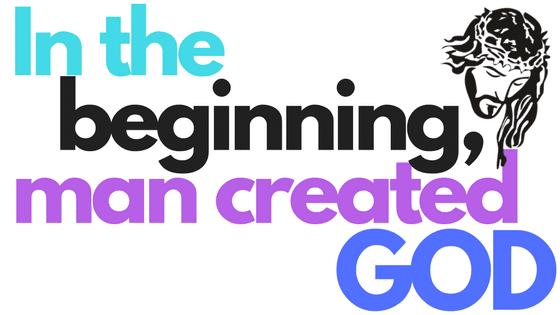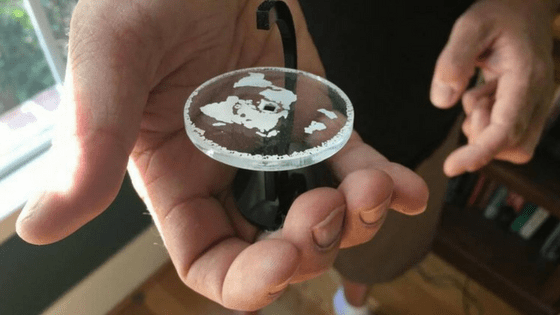Percentage polls say 3% to 100%. Who’s right?
Accurately estimating the percentage of U.S. adults who are Atheists is like trying to nail a custard pie to the wall.
Here’s why:
Finding #1: Results of two leading public opinion polling agencies found that 3% or 11% of American adults are Atheists.
The Pew Research Center reported that the percentage of Atheists in the U.S. had almost doubled in seven years, from 1.6% in 2007 to 3.1% in a 2014 poll.
Pew used what is called the “self-identification method” during phone calls to estimate the percentage of Atheists in the U.S. They listed 15 possible religious affiliations. If the participant selected the “nothing in particular” option, they were then asked if they considered themselves to be an Atheist, Agnostic, or neither.
Gallup is different. They regularly poll peoples’ belief in God using a “binary response” method, during telephone interviews. They supply three alternative answers: “believe in,” “not sure about,” and “don’t believe in.”
- During May 2016, 11% responded: “Don’t believe in” and 10% responded: “Not sure about.”
- The previous survey during May 2007 showed that 6% responded: “Don’t believe in” and 8% responded: “Not sure about.”
The article was titled “Most Americans Still Believe in God.” I think that it should have been “Most Americans say that they still Believe in God.”
Unfortunately, both answers would probably have been chosen by both Atheists and Agnostics. That might be the reason why the results are so much higher than Pew reported.
Finding #2: Results of a uniquely designed public opinion poll found that 26% of American adults are currently Atheists!!!
W.M. Gervais and Maxine B. Najle conducted a complex poll to determine the number of Atheists in the U.S. The full report was published on Sage Journal in May 2017.
They designed their poll to overcome the reluctance that Atheists must respond accurately. Many are suspected to falsely “present themselves as believers, even in anonymous questionnaires.” They conducted an Internet-based poll because the participants would probably have a much greater sense of anonymity, compared to telephone poll like those conducted by Pew, Gallup and other polling agencies:
The team collected a set of 2,000 randomly selected participants whose demographics matched national statistics and with whom they could communicate anonymously over the Internet.
- One third of the set was polled by replicating Gallup’s binary response method. They simply asked participants directly “Do you believe in God.” Seventeen percent answered “no.” This result is considerably higher than Gallup’s 11%. The researchers believe that their result is more accurate and that the difference may be:
“… attributable to the heightened social desirability pressures inherent to telephone polling.”
In other words, the participants felt safer to give the correct answer over the Internet than over the phone.
- Another third, called “the control group,” were asked to examine eight innocuous statements, like “I am a vegetarian,” I own a dog.” “I have a dishwasher in my house,” etc. The individuals were asked to respond only with the total number of these statements that do not apply to them.
- The final third, called “the test group,” were given nine statements. Eight of them were identical to those of the control group. One was added: “I believe in God.” Again, they were asked to respond with just the total number that do not apply to them.
By comparing the control and test group results, they were able to compute that 32% of U.S. adults are Atheists! There is no way in which the polling agency could determine which of the individuals polled did not believe in God. The individuals would know that they were safe and would probably answer more truthfully.
Finally, then organized a different set of 2,000 randomly selected participants whose demographics matched national statistics. This time:
- Half of the set, called “the control group,” were given six statements like “I have played Scrabble.” “I have visited New York City.” I eat meat.” They were asked to respond with the total number of these statements that did apply to them.
The other half, the test group, were given seven statements: six were the same as those given to the control group to which was added “I do not believe in God.” They were asked to respond with the total number of these statements that do apply to them.
Comparing the control and test group results they were able to compute that 20% of U.S. adults are atheists.
The two results, 32% and 20% were obviously quite different. The researchers believe that this is caused by people responding differently to positive and negative framings of a socially controversial statement. That is, the Atheists in the first test group found it easier to passively disagree that they believed in God than the Atheists in the second test group found it to actively agree that they were Atheists. They settled on the average of the two results: 26%. This represents more than 80 million adult Atheists in the U.S.! In comparison with the size of the two largest U.S. Christian denominations: there are more Atheists than members of the Roman Catholic Church and far more than the 15 million members of the Southern Baptist Convention!
Finding #3: Almost 100% of American adults are Atheists:
Although this value seems intuitively impossible, a case can be made for its accuracy, depending upon the precise definition of “Atheist” that is used.
Pamela Whissel, writing for the American Atheist magazine, referred to the Oxford English Dictionary as:
“… the definitive record of the English Language. … In five centuries of usage, the word has never acquired the legitimate definition of a person who believes the existence of God. Rather, it says ‘the existence of a God. [Emphasis not in the original] … According to the definitive authority on the English language, if you don’t believe in Zeus, you’re an atheist. If you don’t believe in Allah, you’re an atheist. If you don’t believe in Vishnu, you’re an atheist.”
She referred to the first of the Ten Commandments in Judaism and Christianity. There are three versions in the Bible. In the King James Version:
- In Exodus 20:3: “Thou shalt have no other gods before me.”
- In Exodus 34:14: “For thou shalt worship no other god.”
- In Deuteronomy 5:7: “Thou shalt have none other gods before me.”
She says that, as far as people recognizing other deities: “This is nothing if not a mandate for atheism” — to not believe in a whole bunch of deities.
Two books dealing with Wicca and Neo paganismare still in print after three decades are:
- Janet & Stewart Farrar, “The Witches’ God,” is available in Kindle and Paperback formats, on Amazon.com. Part III gives an alphabetical listing of more than 1,000 gods including a brief history and the main correspondences of each.
- Janet & Stewart Farrar, “The Witches’ Goddess,” is also available in the same formats. Part III is like the other book and describes more than 1,000 goddesses.
Using the above logic, some believe that the clear majority of U.S. adults are Atheists in that they have no belief in the existence of all or almost all the 2,000 Goddesses and Gods that are described in these books. Further, they have no belief in the existence of thousands of other Gods and Goddesses in which people have believed that are not listed there. Thus, close to 100% of American adults are Atheists many times over by the Biblical definition.” QED.
References
Note: In this article I capitalize the words Atheist and Atheism. Usually, only organized religions are so capitalized. However we note that when an Atheist is asked what their religion is, they some answer “Atheist.” Although Atheism is lacking some of the attributes of religion, some regard it as a religion because it involves a belief about God , and often involves personal ethical beliefs. Thus I capitalize the term here.
Pew Research Center: Religion & Public Life. 2015. America’s Changing Religious Landscape.
Gallup. 2016. Most Americans Still Believe in God.
Gervais W.M., Najle M. 2017. Sage Journals. How Many Atheists Are There?
American Atheist magazine. 2017. Second Quarter. Hiding in Plain Sight.
Wikipedia. 2017. Catholic Church in the United States.
Wikipedia. 2017. Southern Baptist Convent.
Whissel P. American Atheist magazine, Fourth Quarter. Only an Atheist can truly obey the First Commandment.
Farrar J, Farrar S. 1987. Phoenix Publishing Inc. The Witches’ Goddess.
Farrar J, Farrar S. 1989. Robert Hale. The Witches’ God.
The views presented on this blog are an extension of those presented on the Religious Tolerance website. The purpose of all articles is to compare the full range of beliefs and actions by people who are members of various faith groups within Christianity and other world religions, individuals who are NOT Affiliated with a faith group (NOTAs), and secularists.












